Comics Marketing is Dead. Long Live Comics Marketing.
On marketing in the direct market, and why it might be time to rethink how it’s being done.
If you ask one person about the state of comics marketing, they might say it’s thriving.
Ask another, and they could say it’s struggling.
Typically, this might be reflective of the divisive culture we live in, where no matter the subject, there’s a line drawn in the sand with legions on each side. And maybe it is. But in this situation, I’m not speaking hypothetically. I know this because I asked. And then they told me.
“There’s never been a more exciting time in comic book marketing because there’s never been as many opportunities with the variety of distribution channels and, as a result, even more competition,” Arune Singh, the Vice President of Marketing at BOOM! Studios, told me. “Comic book marketing feels more targeted and purposeful than ever before as companies develop material for underserved or new audiences, meaning we need to reassess every aspect of what we do. 1 Challenging norms through that kind of self-reflection can only lead to more new ways of marketing comics that break through to broader audiences.”
That’s a rosy perspective on the state of things, and it’s understandable Singh would think that. BOOM! is arguably the hottest direct market publisher of 2020, and its marketing team has generated huge hits the past couple years. But if you ask David Hyde, the head of publicity and marketing shop Superfan Promotions, it’s a different tune altogether.
“I’ve been doing book publicity for twenty years. This is probably the low water mark I’ve seen for book coverage,” Hyde told me. “That unfortunate reality is driven by the economy and the layoffs that have impacted so many news outlets. COVID and the ensuing furloughs and additional layoffs has only made a bad situation worse. There are less outlets covering fewer books.”
The bizarre thing about those two opposing perspectives is they’re likely both correct at the same time. It is an exciting time for comics marketing, but also an incredibly challenging one. There are more diverse options and opportunities than ever, each of which comes with increased competition and a fanbase that is tired of the usual tricks of the trade. That means success can be found, but it’s a minefield getting there.
Part of the problem lies in the fact that the playbook, in many ways, is much the same as it has been for decades. Comics marketing in the direct market 2 feels like it’s stuck in the middle between the way things were and the way they work now, at least in part because it’s caught at the intersection of the overall comic book ecosystem. Marketing isn’t an independent aspect of the way these publishers and creators operate; it’s an interconnected element with ties to publishing, editorial, distribution and everything else. That means certain practices are adhered to, just because they seemingly have to be. So how do we get to where comics marketing needs to go?
By rethinking how it’s done, and finding new answers to old problems.
As discussed in yesterday’s feature, at its very core, the work of a comics marketer largely mirrors the sales cycle of the market they’re working within. For the direct market, 3 that means efforts mostly match the three month order window comic shops order within, starting with a title’s announcement, followed by initial orders by shops, then to final order cutoff, 4 before typically closing with a push upon release to drive sell-through, or sales to actual customers in store. It does this because the primary customer – thus the main target for marketing efforts – are retailers themselves. 5
This is critical to understanding how comics marketing works, because it means it’s inextricably linked to the rest of the processes within comics. Editorial is in charge of making sure the comic actually happens, so they’re the ones who produce covers for marketers to reveal and interior pages for previews. Publishing connects to marketing – and perhaps even editorial – through the creation of incentive variant covers and solicitations, amongst other things. Distribution is obvious, as the efforts of a marketer are designed to crescendo at specific times during the sales cycle this channel drives.
Because of its interconnected nature, there isn’t always a lot of space for outside-the-box thinking. Those moments in the sales cycle that result in the biggest push – again, announcement, initial orders, FOC, and sell-through – are triggers for marketing efforts, even though the goal is to tailor “your plans to build a consistent, sustained narrative throughout,” as Singh told me. That’s why you see the same playbook consistently used from comic to comic, publisher to publisher. If it ain’t broke, don’t fix it, especially with the next trigger always on the horizon. So by and large, the fundamentals of what these campaigns are shaped like and what they’re composed of have a lot of similarity to one another.
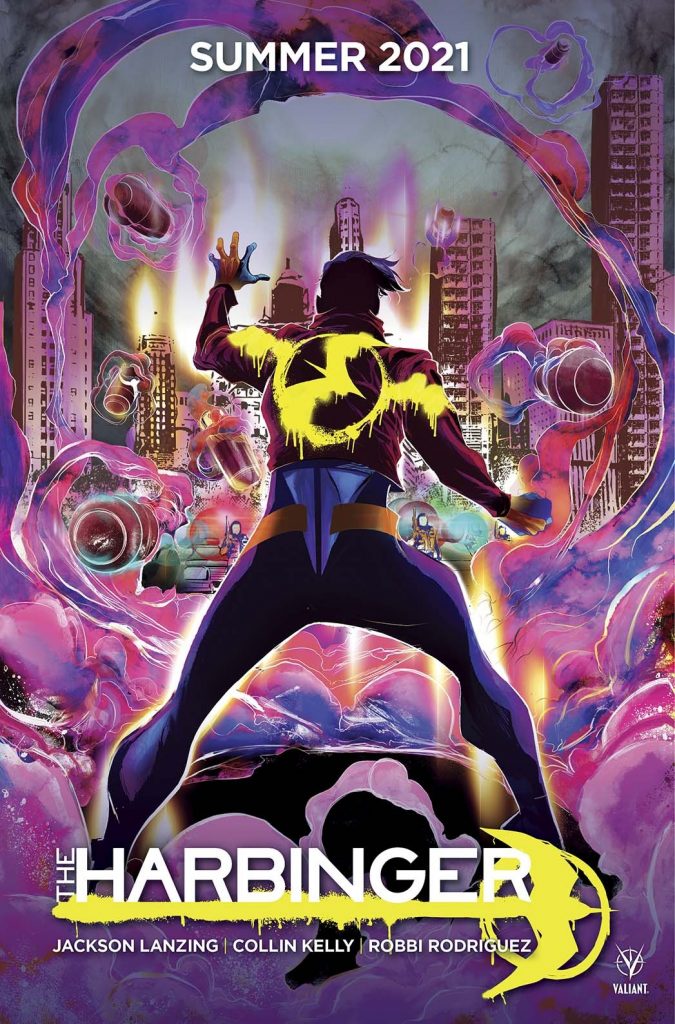
Those strategies typically include an exclusive announcement on a notable platform, 6 followed by a press release talking up the title – “nothing will ever be the same!” “unlike anything you’ve ever read before!” etc. etc. – so other websites can pick up the information and spread it to their readers, the release of cover art and solicitations in hopes of getting hits on comic sites, and then a mix of interviews with the creative team, previews with art for the first few pages of an issue, advance reviews, and assorted other tactics. There are permutations within that process, but most of that is consistent, along with copious finger crossing. This, by and large, is how the traditional method of comics marketing works.
But does it work?
Sort of?
On occasion?
It depends on the person?
That’s the tricky part about marketing in general. Some people only respond to television advertising. Others connect with social media ads. There are probably people who are ride or die for billboards. But when I quizzed readers about what works for them and what doesn’t, the curious thing was that every single traditional marketing effort that was mentioned as impactful – including solicitations, previews, variant covers, interviews, and even just coverage on comic sites – was noted as an active turnoff by someone else.
The general tone from those I spoke to about the traditional comics marketing cycle was one of exhaustion and blindness. They’ve been fans for years, so they’ve seen it all before. A reader named Adam Bogert said it best when he told me, “I feel like I’ve become numb to what you might call traditional marketing.”
Even comics marketing consultant Tara Ferguson echoed that sentiment to a degree, as she believes it’s become a bit paint-by-numbers in recent years, losing some of its impact along the way.
“It has become repetitive, with a certain level of creativity in techniques and ideas being lost,” Ferguson shared. “There is always a strive to increase awareness and achieve higher orders, as is the entire point of marketing, but I think a complacency has set in.”
That’s not to say there isn’t value to those tactics. They’re tried and true for a reason. But simply rolling out the usual routine and hoping for sales isn’t enough anymore. It has to be more than that, as Hyde told me.
“When the primary focus of your messaging is about FOC or on sale dates, you aren’t having a dialogue with your readers. It’s one-way conversation,” Hyde said. “Talking about comics should be fun. Fun is contagious.
“And marketing FOC dates is not fun.”
Adhering to how things worked simply because that’s how things have always worked just isn’t enough to cut through the noise in 2020, when there’s incredible amounts of competition in the market, infinite entertainment options at our fingertips, 7 and enough insanity at our doorstep every day of the week to keep us locked into an infinite loop of doomscrolling.
But there are tactics that do make a difference, at least more than others, and many of them are built from the same foundation these others are. They’re the same ideas, just remixed and turned into something new. That’s what’s moving the needle today, even if their roots are built on the ideas of yesterday.
The biggest change of pace from the way things worked before is how we’re arguably undergoing a shift away from the top comic sites and entertainment outlets being the most effective marketing targets. That’s partially because the choices being made at each of these portals, as Hyde told me.
“Mainstream outlets are less likely to cover creator owned projects,” Hyde said. “And many of the comic trade outlets that really helped drive sales and enthusiasm for the industry a decade or two ago have radically scaled back their comics coverage, because that coverage was not driving clicks or revenue.”
Just like how comics marketing is connected to every other facet of the comics ecosystem, it’s also at the mercy of the evolution of the online experience. Revenue from banner advertising is the backbone of your average website, 8 and with that coming from impressions – or individuals “seeing” an advertisement 9 – it means the name of the game is volume, not depth. Out goes comics coverage to a degree, in comes comic-related media and incendiary takes designed to drive traffic, typically from social. That becomes the emphasis rather the quality of coverage. Because of that, Hyde has found success by working with sites that might not have the same readership but make up for it by creating more impactful content.
“I’ve seen great traction from smaller outlets with genuine book coverage. Because enthusiasm matters,” Hyde told me. “Metrics and analytics are great, but there’s no replacing genuine passion.”
That underlines the first theme of this new era of comics marketing: leveraging enthusiasm. Hyde believes “the best way to market a client and their book is to introduce them to an outlet or journalist that is excited to have an informed conversation with them,” whether that’s a big site or just “an enthusiastic blog.” He describes both as being “invaluable.”
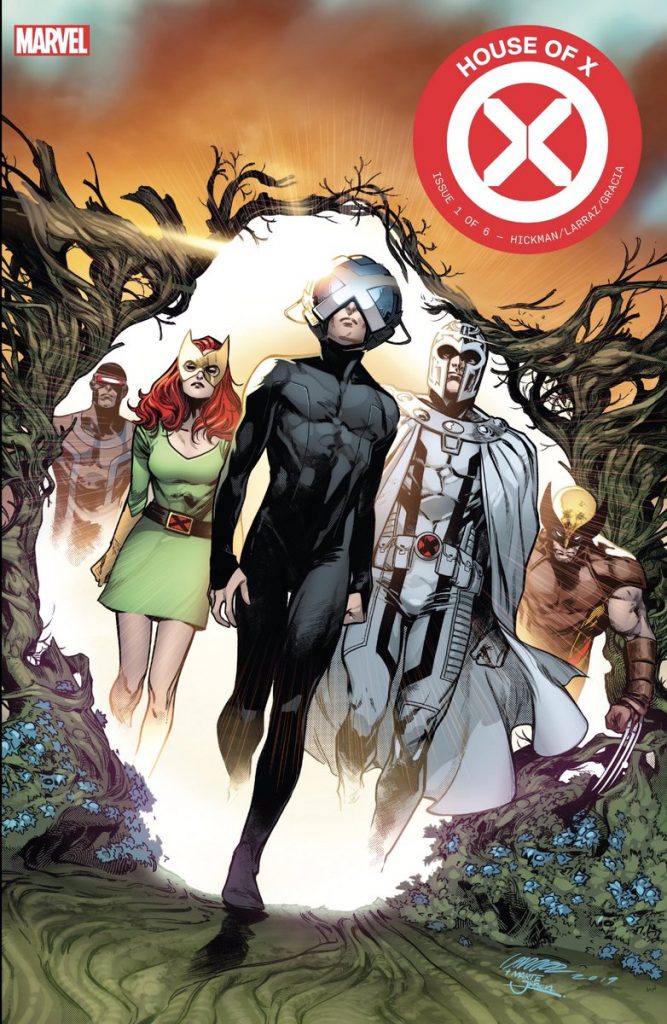
A fitting example of this comes from the comic site AiPT. 10 On the surface, Marvel pursuing the tens of millions of visitors a ComicBook dot com or CBR generate each month for coverage of last year’s X-Men relaunch might have made the most sense. 11 But Chris Hassan’s passion for the subject and the site’s aligning of the mutant favoring fandom made AiPT’s X-Men Monday the place to be for new information about Krakoa, both organically and because Marvel seemingly leaned into it. Instead of shoehorning coverage into another outlet that might have delivered bland, forgettable interviews to the masses, Marvel and AiPT formed a mutually beneficial relationship built on what Hyde mentioned earlier: genuine passion.
This is consistent with what I learned from readers, as the bulk of them said that they don’t frequent the larger comic sites. Instead, they turn to personal tastemakers, including critics, podcasts, and websites, but also retailers and the social media and newsletter efforts of favorite creators. Sometimes all it takes is getting them to talk up a project, share preview pages, or even having an in-depth conversation with a member of the creative team, and then supporting them once it hits. 12 Whatever the result is, getting a comic in front of the right person – or, dare I say, influencer – can have an outsized impact.
A great example of this came from a reader named Keigen Rea – a subscriber to Chip Zdarsky, Kieron Gillen, Ryan North and James Tynion IV’s newsletters – who told me he “had no intention at all of buying Slaughterhouse-Five, 13 but I bought in on release week because of three of those four newsletters mentioning it.” When a reader’s interests already align with one of these people, seeing them praise a title can be enough to push them towards a purchase, as Rea shared.
Some of this is easy. It’s about taking advantage of existing relationships between creators, making sure critics, podcasts, 14 creators, websites, retailers and whomever else has access to high resolution PDFs, 15 and, perhaps above all, knowing your targets. For example, If I was Singh, I would have been living in Oliver Sava’s inbox knowing how much he loves Al Ewing, because Sava is the kind of person who can move the needle for a book like We Only Find Them When They’re Dead. That’s why the work of a comics marketer is not unlike that of a matchmaker. Find the right fit and both sides could benefit. Pair them poorly and you have yet another generic interview lost to the sands of time.
Knowing your audience and who you’re targeting is critical across the board, even in other markets. While we’re focusing on the direct market here, Gina Gagliano, the Publishing Director of Random House Graphic, emphasized to me how important it is to shift your approach if there’s a specific angle that might appeal to the customer or store you’re targeting or the book you’re promoting. This might not be anything significant. It could just be what you emphasize when you contact someone, or what you include in materials you share. But those small tweaks may be crucial to unlocking the enthusiasm you want to tap into.
Tying into the first theme, the second is building heat on social. There’s the old adage “fish where the fish are,” and that’s an important one for marketing. And social media is a heck of a fishing hole. While you should know, as Ferguson told me, that comics Twitter is very much a bubble that doesn’t necessarily represent the bulk of readers, 16 you could make a pretty strong case that more comic fans learn about new titles from social media than comic sites.
The objective there is to get people talking, sharing and spreading the news for you. It’s leveraging enthusiasm all over again, but with a specific mechanic at the wheel. But these last two ideas are significant because most comics publishers and creators aren’t exactly flush with robust marketing budgets. 17 Social is powerful because it only costs you time and effort.
And the potency of comics on social media is tied to its visual nature. This makes platforms like Twitter and Instagram the perfect places to spread the great work of the creative team you’re working with at the time, because they represent the work well and are fundamentally built on sharing content with others. Social has its limits, of course. Hyde told me, “I don’t think social media alone can make a book. But it’s an essential amplifier and a tool for creating conversation in the community.”
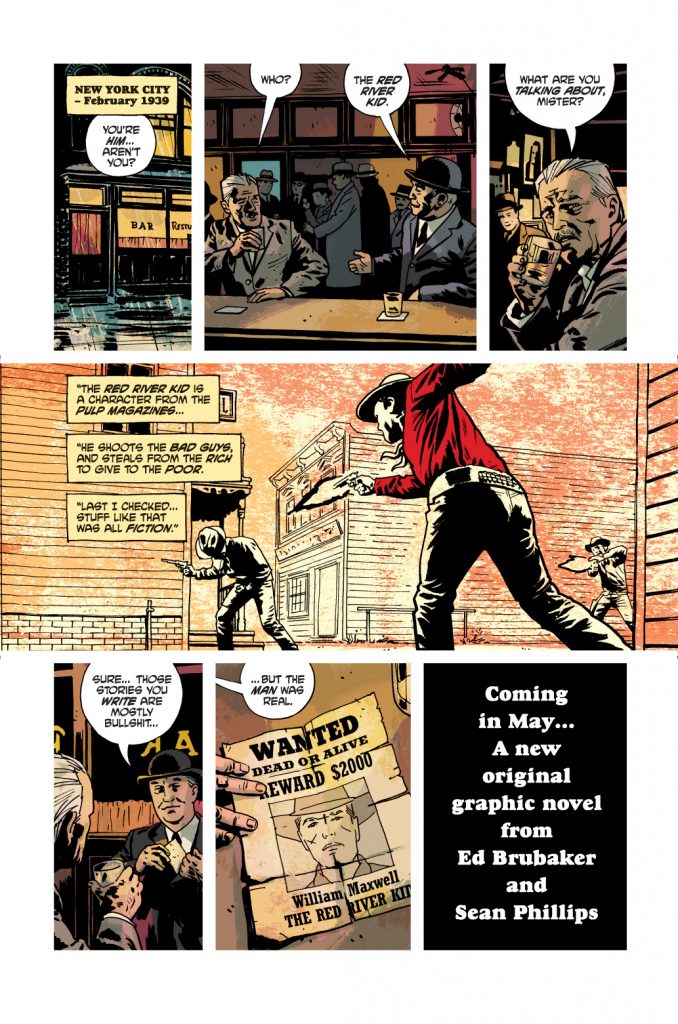
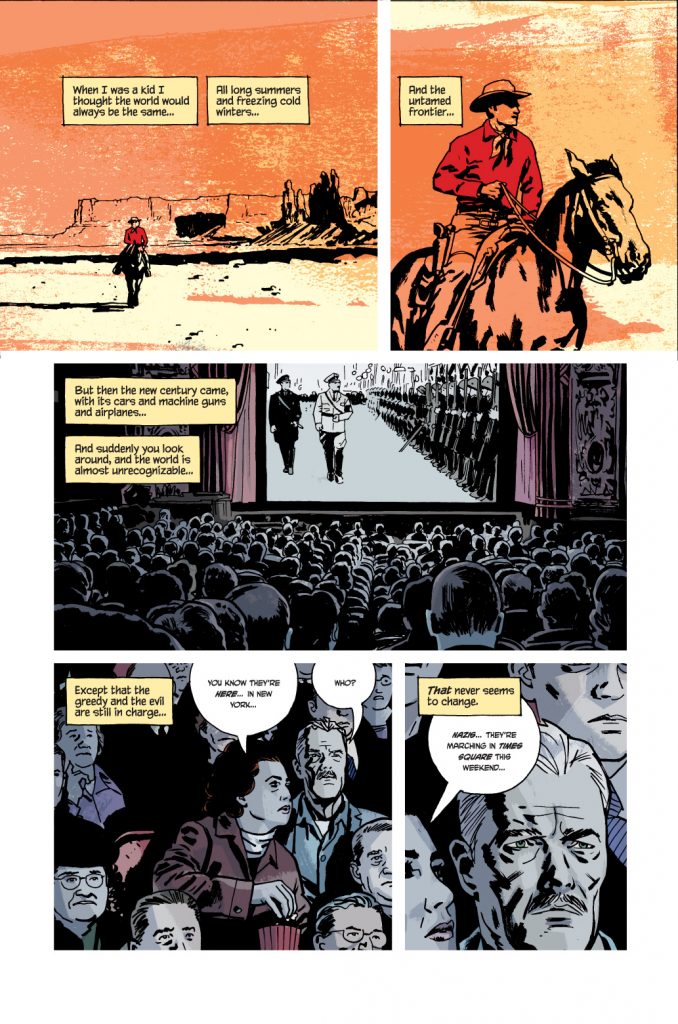
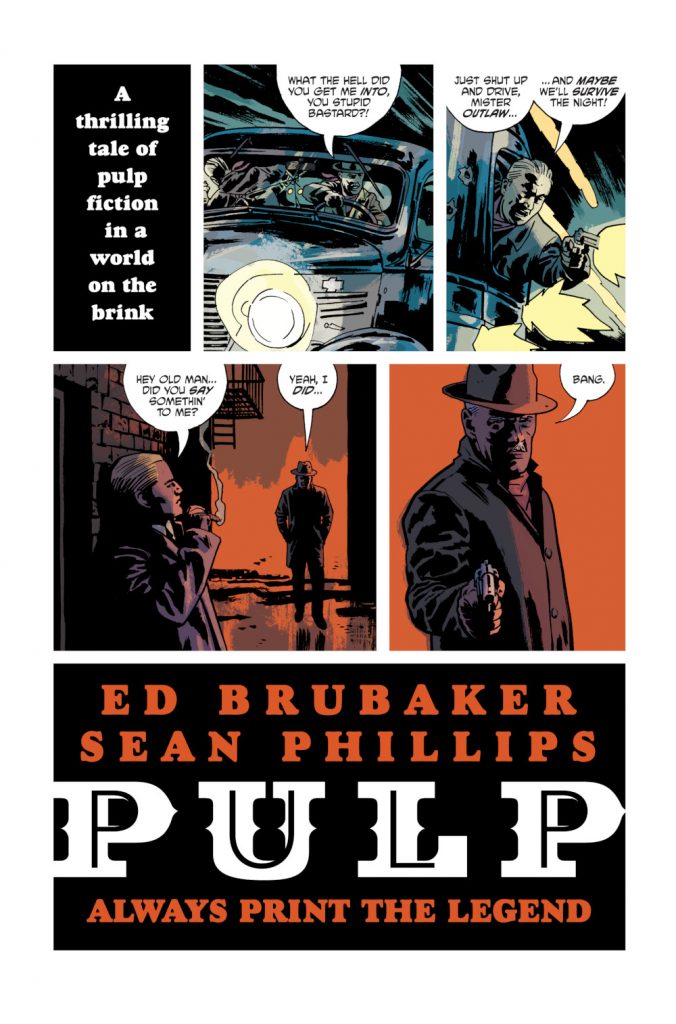
One of my favorite examples of this amplification in the past was a trailer created for a notable release. Ed Brubaker and Sean Phillips’ graphic novel Pulp was their biggest success to date, and while it was by no means the only – or even the biggest – reason for awareness skyrocketing, the three image trailer they created just for this book was perfect for delivery on Twitter. The beauty of this tactic is it was initially delivered by a press release for the book, and even just my one tweet about it reached nearly 9,500 people. Multiply that by an array of other people and sites doing the same thing and all of a sudden we’re talking big numbers. It goes to show you that even stale tactics like press releases can be enlivened if they have a reason to exist beyond their basic function.
Marvel has succeeded with video content in a similar vein, like this recent trailer that introduces the Swordbearers of Arakko from “X of Swords” while being paired with a sales and awareness message. Some comic publishers have thrived by creating content designed for social sharing and building hype rather than regurgitating existing marketing items onto these platforms. That’s crucial to finding success on Twitter and beyond.
One last note: It’s not just about creating a one way conversation with these first two themes. I reached out to Blake Bowyer, a comics fan and marketer who works at Nike as their Digital Director, Integrated Accounts, for his perspective on how to connect with new audiences. One of his suggestions built off these ideas. He believes tapping into passionate communities on Facebook Groups and varying subreddits would be a potent way to build awareness, as it doesn’t just put you in front of contextually relevant audiences, but helps you foster community support and stimulate word of mouth. I know some publishers have dabbled in this. It might be worth exploring those connections to a greater degree.
The third theme was something I talked about earlier, and that’s working closely with publishing and editorial. While that can occasionally be a hindrance – as Ferguson told me, when FOC hits and covers aren’t final and there’s no interior art to be seen, both retailers and marketers are put into an impossible position – value can come out of this relationship. The primary tactic I want to focus on is variants, a word that everyone has complicated feelings about. They’re terribly overused, and they can create predatory behavior by speculators that could harm titles in the long run. But as David Dissanayake, the Director of Publicity & Direct Market Sales at Vault Comics, told me, they’re “certainly part of the calculus” for comics marketers.
“They are a marketing tool in the sense that they add to the chorus of people who talk about the book and are excited by it,” Dissanayake said.
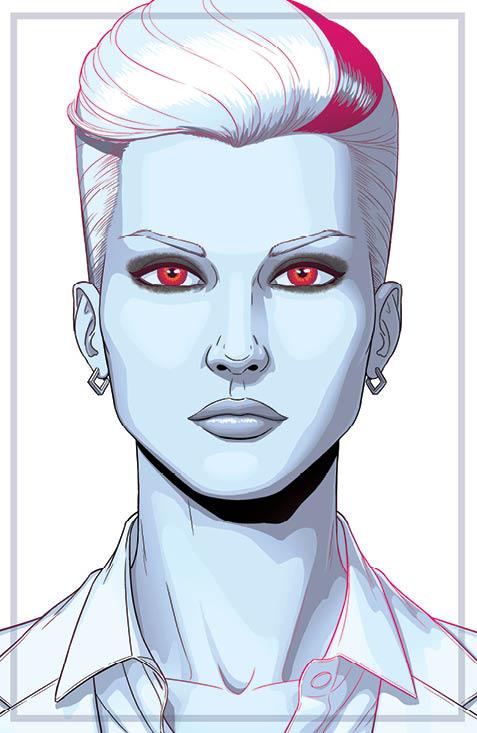
Variants – and really all covers, as even A covers from talents like Joshua Middleton or Julian Totino Tedesco can fuel interest – work nicely with the first two themes. They generate enthusiasm and play nicely on social. How many times can you think of a fawning tweet or Reddit post about a particularly impactful cover that ends up spreading like wildfire online? The answer is likely a lot. 18 Singh, for one, views them as a great opportunity to expand a title’s audience.
“I find that variant covers present a great opportunity to turn readers onto a new series they might not have previously considered. These variants always generate more press which means more awareness with the folks you expect to be interested, but sometimes the artists involved are what gets someone to pay attention to a comic that wasn’t on their radar – and then convert them into readers,” Singh said. “Every variant is an opportunity to spotlight a different nuance of a project and create that unforgettable image that draws in a new reader.”
As BOOM! and others have shown, variants can lead to real impact, even if it’s easy for those current gains to turn into later losses if you play it wrong. 19 They act as a foot in the door, a sign post that says, “hey, pay attention to this comic!” Sometimes, that’s all you’re looking for: a way to capture someone’s attention in hopes they make the purchase, whether they’re a reader or a retailer.
One of Hyde’s great wishes is that this theme gets adopted to a greater degree. As he told me, “traditionally comics are a very editorially driven industry, where publicity is seen as a necessary evil.” That puts marketing in a position where it’s perceived as a secondary effort. For comics to thrive, Hyde believes there should be a leveling of the playing field.
“There needs to be an overall healthier approach to comics marketing, where editing and marketing are in a dialogue as equals, which is much more the case in traditional publishing circles.” 20
The fourth theme is one of the basics, but it sometimes doesn’t happen so it’s worth reiterating: keeping everyone informed. I nodded this way in the last point with Ferguson’s message about how publishers need to ensure their covers and interiors are available for both readers and retailers to look at before FOC, but it’s more sprawling than that. In a weird, very direct market way, retailers have become some of the best marketers in the industry by necessity. They both hand sell 21 comics they believe in upon release and, if you get necessary information to them early enough, they’re powerful drivers for increased pre-orders from customers and, by nature, increased order numbers for their own store.
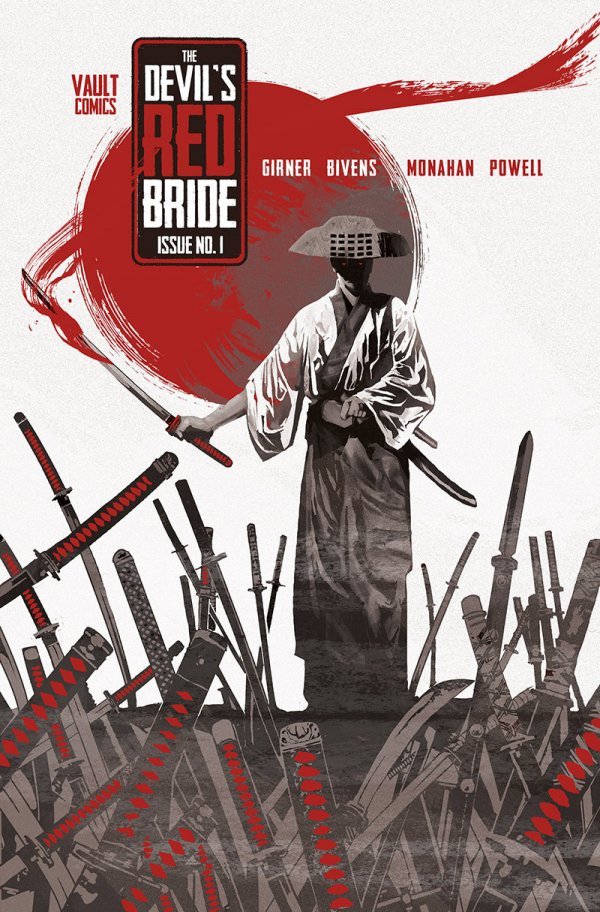
An informed retailer is a comics marketer’s best friend, because success for one leads to success for the other. That’s why it’s crucial that marketers arm comic shops with order information at the right juncture, advance PDFs so they can pitch a title with confidence, marketing materials 22 so they aren’t ordering blind, and when you do all of this, you don’t change it all later on. Ferguson noted that pre- and post-FOC changes are commonplace for some publishers, a painful shift that decreases retailer confidence and even impacts order terms. Locking everything down is important.
But you can’t just leave it there. You have to help them sell to their customers as well, as Dissanayake said.
“As a publisher, it’s our job to make sure we do everything we can to help retailers sell through the books they order. You can’t just sell-in to retailers, wash your hands of the matter, and then walk away,” Dissanayake told me. “Thinking of retailers as the final step in the process is just not helpful and it’s not conducive to a healthy market. The readers are the final step in the chain, and publishers have to help retailers in the process of selling books to readers.”
That’s why it’s necessary for marketers to disseminate key information to all parties, not just retailers. Getting it in front of enthusiastic critics, podcasters, creators and beyond. Working with websites to get previews and key order dates out to readers. Building up and using your own channels to connect with passionate fans. Keeping everyone informed makes it easier for readers to pre-order and retailers to know what their levels are. That’s huge.
A good example of this dropped into my inbox as I was working on this piece. Rather than sending me emails for each item, Source Point Press delivered a media kit for an upcoming release called Roarin’ 20’s: World’s Fair with a single Dropbox link including not just a press release, but a preview that was available for me to run and a review PDF for me to read. That reduces the questions I need to ask and hoops I have to jump through. It was a great plan that increases the probability I engage with it.
The last theme I wanted to mention fits naturally as the finale: learning from past results. The only way you can get better at something is by maintaining your strengths and improving on your weaknesses, so post-campaign analysis is paramount to future successes. This, in a lot of ways, is a combination of everything else I mentioned, because each iteration of those plans should improve if you’re being honest about your failings and clever about your wins.
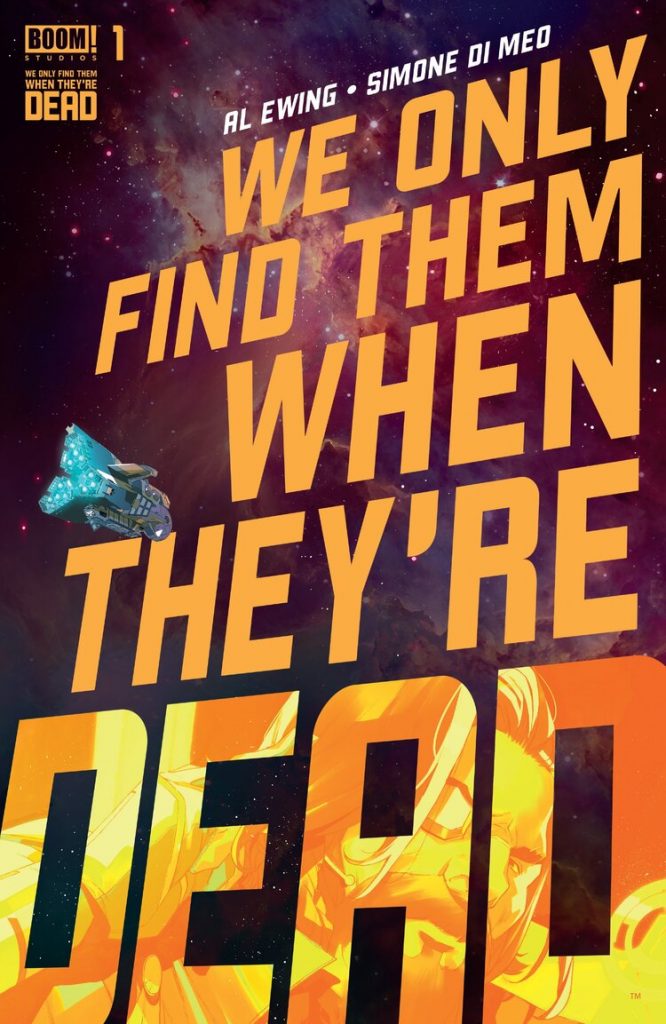
You might think this kind of thing is something every marketer does. As someone who knows a lot of marketers, 23 I can promise you this: it isn’t. But it should be. By having conversations with retailers about what worked, paying attention to the response of partnering with certain sites or critics, looking at metrics from your social activity, and figuring out which tactics did or didn’t move the needle, you can determine what should be carried forward or left behind. That’s important.
The best example of this in recent years is the roll BOOM! Studios has been on, starting with Kieron Gillen and Dan Mora’s Once & Future. They made a big deal about its launch, going to ComicsPro’s Annual Meeting 24 to talk about their deeply collaborative approach to its launch, 25 and in the process of that event and release, I’m sure they learned a whole lot. They carried those learnings on to Something is Killing the Children, Red Mother, Folklords, Seven Secrets, We Only Find Them When They’re Dead, and will almost certainly do so going forward as well. Perhaps predictably, several of those set record numbers for the publisher in terms of orders from shops.
Was each launch perfect? No. I gave them guff for some of the flaws of the Once & Future release. I wasn’t the only one either. Retailers were quick to point out some of the pain points. But to their credit, BOOM! did two things from there: they listened to the feedback, and they learned from it. Singh mentioned how essential that is to everything they do there, and I believe it because I’ve seen it.
“I truly believe that overall marketing success comes not from the individual highs and lows but from how you execute on a day to day basis. It’s that consistency that not only makes you more efficient, but also makes your message more effective – the repetition of tactics builds a specific conversation with your audience,” Singh shared. “That consistency extends to not only successful end results of your work but also the ways in which you review it after completion, continually challenging your process and results to figure out how to improve the next time, even if that change is only incremental.”
Incremental change is still change, and that’s why it’s so important for a marketer to always be learning. After all, how do you grow if you just keep rolling out the same playbook? The answer is simple.
You don’t.
This all is why it’s critical to not just lean on the old standards. For comics marketing to thrive, we can’t just rely on press releases and the power of prayer. It has to be something more than the tried and true to get our attention these days, because there’s just so much else you have to cut through and compete with.
A reader named Levi Hunt had two answers for me when I asked him what makes him pay attention to a new comic release, and the first was exactly what I’m talking about. He said “doing something outside the norm” gets the job done. Sometimes that might simply be having Keanu Reeves involved with your comic, as Hunt noted, but other times it could be a surprising cover like the Dave Gibbons’ Watchmen variant for Venom, The Button idea/tactic/lifestyle Bad Idea rolled out, or the shockingly minimalist approach taken on House of X and Powers of X. 26 Doing the unexpected is a great way to stand out, especially in a field known for playing back the hits.
That’s not to say marketers have to throw the baby out with the bathwater. The structure of the traditional approach to comics marketing is still essential to the success of any effective professional in that field, as are many of the tactics. 27 It’s more about marrying the best parts of what came before with ideas that are perhaps a bit more non-traditional, like how Image sent a press release with the trailer Brubaker and Phillips created for Pulp. That’s a traditional delivery system being used to send out something a bit more exciting. And it worked!
This is already happening, of course. Each of the marketers I spoke to for this piece is someone who is finding answers in an environment that’s both full of opportunity, but also riddled with obstacles. More than that, they’re always learning, which is central to succeeding at any job, but perhaps especially so in their line of work. They’re also eager to keep pushing for more, because, like Dissanayake shared, “That’s the thing about marketing, you can always do more.”
This is a good thing, because for comics to find – and keep! – new readers while expanding its impact on existing ones, marketers are going to have to find new answers to old problems. The good news is I’d argue they’re marketing from a position of strength. There have been few better times for readers in the history of comics than right now, at least qualitatively speaking. Comics as a medium is thriving.
The onus of connecting retailers and readers with them is on marketers like those I spoke to. That’s a lot of responsibility, and an extremely hard gig when attention is as fleeting as it is in 2020. What those new answers are has yet to be determined, but finding them will be crucial to delivering the results the comics industry needs. But we’re on a path to finding them, I hope.
Going back to the beginning, where two options were available to us: is comics marketing struggling or is it thriving? Earlier I suggested it might be both. But I’d like to amend my answer: how about neither? It’s evolving and doing so on the fly in one of the tumultuous times in recent human history. That’s important, because it needs to for comics to get where it needs to go.
Thanks for reading the second article of three this week on comics marketing. Come back tomorrow for the finale, as I share some tactics I’d like to see more of in comics marketing.
He specifically cited the words we use – like trade paperback, when that term can mean something else for non-comics fans – to what they value as consumers.↩
For this piece, I’ll be focusing on the direct market. The book market definitely seems to have things a bit more figured out in this regard.↩
Or comic shops.↩
Or FOC, the last point retailers can change their orders.↩
The hope is also to drive customers in to pre-order at their local shops, as you’ve likely noticed. You’ve probably seen many a creator talk about the importance of pre-order a time or two.↩
The Hollywood Reporter seems to be the site du jour right now, especially with comics advocate Graeme McMillan doing great work there.↩
Arguably so much that we’ve become inoculated against its impact.↩
But not this one!↩
I put seeing in quotes because it counts when the ad appears on your screen rather than when you actually see it.↩
This site is the former Adventures in Poor Taste (at least I believe it’s formerly that). AiPT is not a small site, but they’re not a titan either.↩
And they did, if only for creator interviews.↩
Multiple people noted to me how bigger publishers don’t even retweet or share impactful content from smaller comic sites for reasons unknown. Success for one is success for the other. Publishers are missing an easy win by not being more enthusiastic with that retweet button.↩
From North and Albert Monteys.↩
Not even just comic podcasts, because there is value beyond them. Even a huge success like Saga likely saw a big lift when The Ringer’s extremely popular podcast Binge Mode covered its first three compendiums. The amount of people tweeting “I just ordered it!” when Binge Mode’s hosts said they were going to talk about it was astonishing.↩
That’s a point The AV Club’s Oliver Sava noted to me, because like he said, it’s “a visual medium.” Ain’t nobody got time for junky PDFs!↩
And that it can be a double-edged sword if you work with the wrong person on this front and they end up acting a fool.↩
These extremely limited budgets are why you see almost zero advertising from comic publishers and creators. They just don’t have the money to afford it, for the most part.↩
Or maybe I just spend too much time online.↩
As many retailers have told me, a #1 that is tagged as a hot book for speculators because a particular cover often finds very few readers returning for #2. That’s the downside.↩
One thing I’d like to see go away as part of the tightening of this relationship: all press releases giddily saying a comic sold out at the distributor level before release. That’s not a win! That means you printed too few copies to allow for reordering, and it sends a confusing message to readers who don’t know any better. Stop!↩
A phrase meaning, effectively, touting comics to their customers in hopes said customer purchases it.↩
Including covers, interiors and solicitations.↩
Outside of comics!↩
This is a meeting of a comic shop trade organization that most of the biggest retail accounts attend.↩
Which included full returnability, limited – but focused – variants, and a number of other tactics. I talked with BOOM!’s Filip Sablik about this around the time it happened. It’s worth a listen.↩
This was probably my favorite, because they effectively said nothing on the build up besides vague things that tapped into the love X-Men fans have for speculation, released a Mark Brooks teaser image filled with alluring details, and let Jonathan Hickman make a mockery of promotional interviews. It was a delight. Sometimes less is more!↩
And clearly I don’t want people to stop doing interviews!↩
